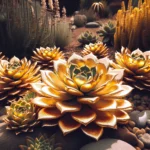Introducing the Sempervivum Flower
Have you ever witnessed the quiet revolution that takes place in a sempervivum plant? These evergreen perennials, fondly nicknamed ‘Hen and Chicks,’ undergo a fascinating transformation that could easily be missed by the hurried eye. These succulents stand out with their rosette form, each one a spiral of tightly packed leaves, but it’s their rare and captivating bloom that steals the show. Let’s dive into the world of sempervivum flowers, the blooming prodigies that command the attention of gardeners and succulent aficionados alike.
Picture this: amidst the thick, fleshy leaves that seem to multiply endlessly, a sempervivum suddenly decides it’s time for a spectacle. Out of the center of a rosette, a stem begins to rise. Day by day, it stretches upwards, and atop this unlikely tower, buds form. While they seem shy at first, they soon burst open to reveal star-shaped flowers, arrayed in a crown of vibrant colors ranging from pinks to purples to reds.
These blooms are not just a feast for the eyes; they’re a signal of maturity and a precursor to the plant’s finale—because, for sempervivums, flowering is a swan song. After producing these gems, the mother rosette gradually fades, leaving behind her ‘chicks’ to continue the legacy. It’s a life cycle that resonates with the beauty of resilience and renewal. If you’re keen on mastering the art of growing these hardy succulents, you’ll be rewarded with a front-row seat to this enchanting botanical performance.
It’s easy to see why the sempervivum flower captures imaginations. In an unassuming plant that’s all about survival, the blossom represents a moment of unexpected beauty—a chance to marvel at nature’s ability to surprise and delight even in the harshest of conditions. With each flowering rosette bidding a graceful goodbye, sempervivums remind us that sometimes, the most profound wonders come in fleeting, yet unforgettable, displays of flower power.
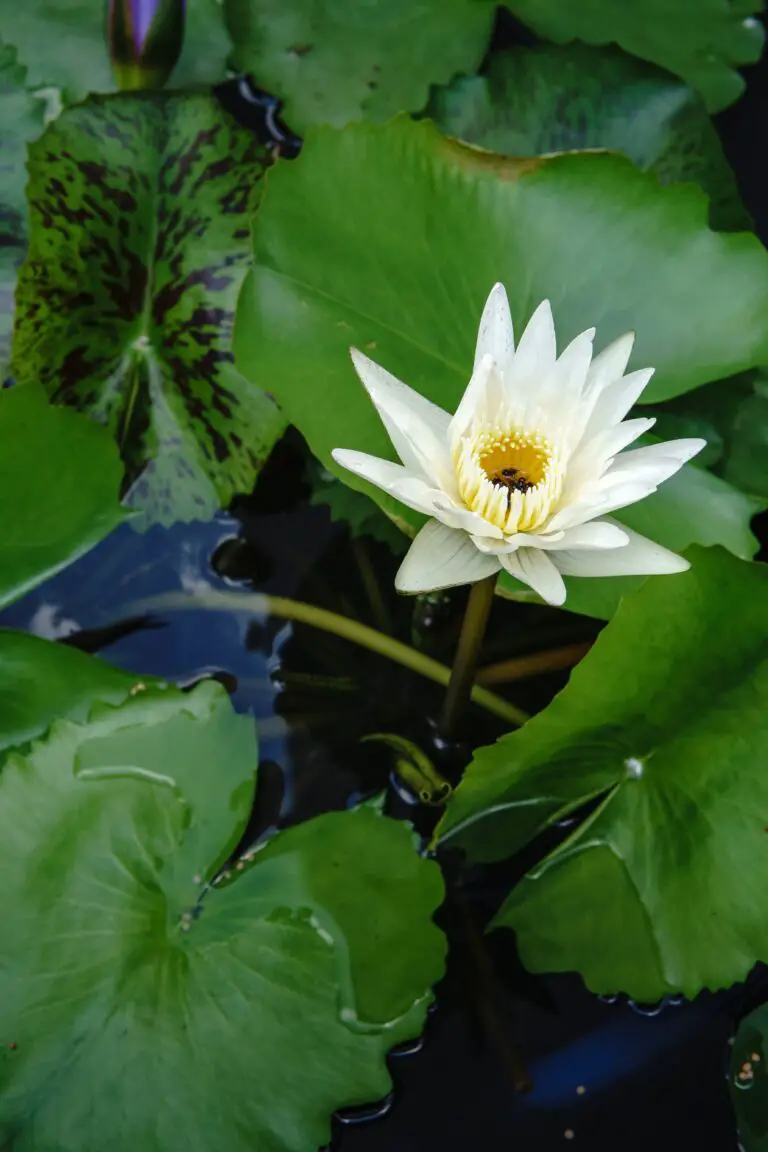
Understanding the Sempervivum Lifecycle
It’s like watching nature’s own time-lapse; the sempervivum, also known as the ‘hen and chicks’ plant, goes through a captivating transformation during its life. But what happens when this succulent stalwart breaks out of its typical rosette form and shoots up a bloom? Well, let’s dig into the dirt of this green enigma.
The sempervivum lifecycle unfolds in stages; it begins as a cluster of tightly packed leaves, much like an artichoke lying low. In this infancy, they’re all about gathering strength, biding their time, soaking up the sun, and braving the cold, with their only job being to grow. Then comes a pivotal turn – the flowering stage. Asserting its place in the ecosystem, the sempervivum rises, quite literally, to the occasion, sending up a flower stalk that’s a marvel in itself.
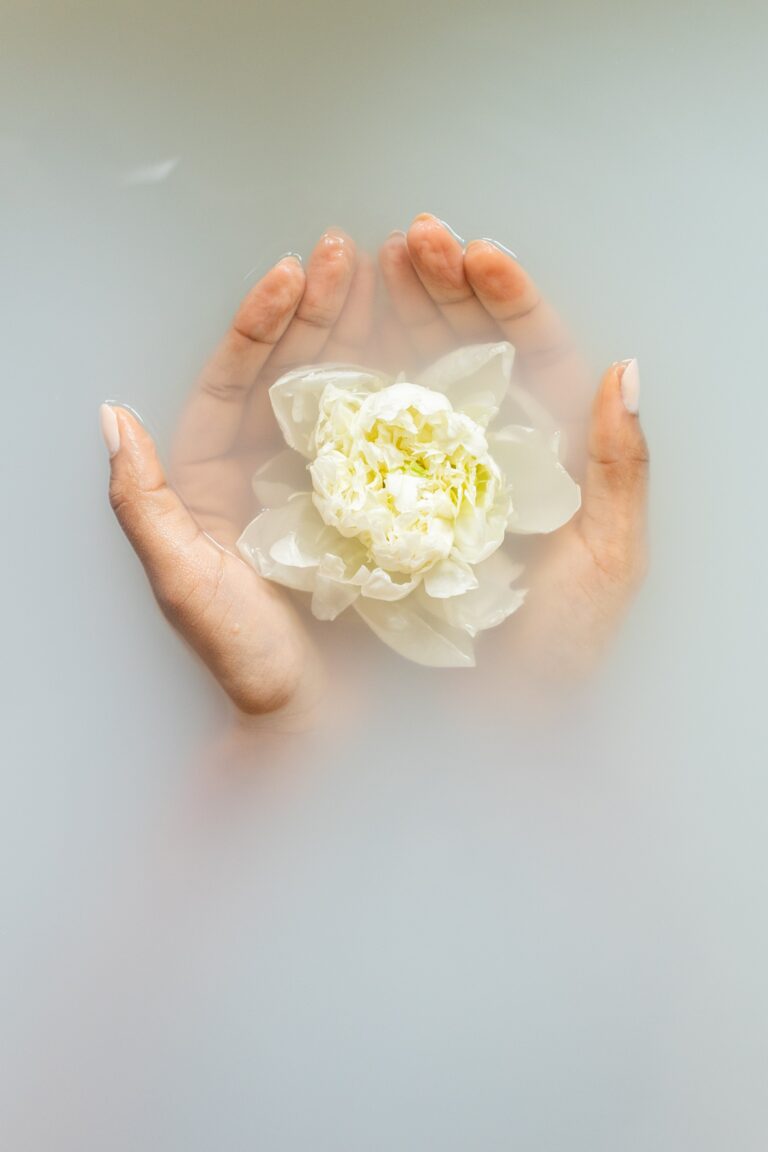
Symbolizing a crowning moment, this floral high point isn’t just for show. The bloom of a sempervivum doesn’t come without a cost; this singular celebration marks the end of the rosette’s tenure. Post-blossom, the plant will eventually die back, vesting all its hopes in the seeds and offsets it leaves behind. It’s a sort of plant-world swan song, a finale that gives way to a new beginning.
Each flower, an intricate dance of petals, exists as a beacon for pollinators. Insects, enthralled by the vibrant colors and seductive scents, flock to the sempervivum’s call. They’re not only visitors but vital players in the perpetuation of this succulent lineage. Understanding this cycle—the humble start, the thriving growth, the climactic bloom, and the somber denouement—offers a glimpse into the sempervivum’s stoic philosophy: life goes on, relentlessly resilient in the face of finality.
If you’re eager to bring these hardy characters into your own garden story and want them to thrive, have a look at this detailed guide for some green-thumbed insights. It’s not just about reveling in the beauty but ensuring the sempervivum’s saga continues, from one rosette to the next.
When Do Sempervivum Flowers Emerge?
The sempervivum, a succulent with an impressive rosette form, has a secret up its sleeve – or should we say, petal? Yes, we’re talking about the moment this stoic plant decides it’s showtime and bursts into bloom. Let’s dig into the blooming season of these hardy beauties and the magic behind their flowering prowess.
Triggered by conditions that we humans often struggle to replicate, these plants flower of their own free will. It’s a bit like catching a solar eclipse; you know it can happen anytime during the summer months, but pinpointing the exact moment requires patience and a dash of luck. The climate plays a pivotal role here. These plants are sun worshippers, with a preference for a Mediterranean feel.
Caring for sempervivum comes down to understanding that sometimes, less is more. These plants are the epitome of self-reliance, flourishing with minimal intervention. A common mistake is the overzealous gardener showering them with attention and water, only to be met with disappointment. Not to fret though. For those looking to deepen their understanding of these stoic succulents, check out an informative guide on sempervivum care and maintenance that’s just a click away.
If you’re dedicated to perfecting your green thumb, it pays off to imbibe essential succulent care tips that ensure your garden remains a thriving spectacle. So when that whimsical Sempervivum finally deems it the right moment to share its floral display, it’s a triumph of both the plant’s resilience and your gentle touch.
Now, should you have the fortune to witness the sempervivum flower, you’re in for a treat. The bloom is a rare gem that’s usually a vibrant hue, albeit short-lived. It’s their swan song, so to speak, as flowering often signifies the end of their life cycle. But worry not! They leave behind offsets, ensuring that their rosette legacy continues.
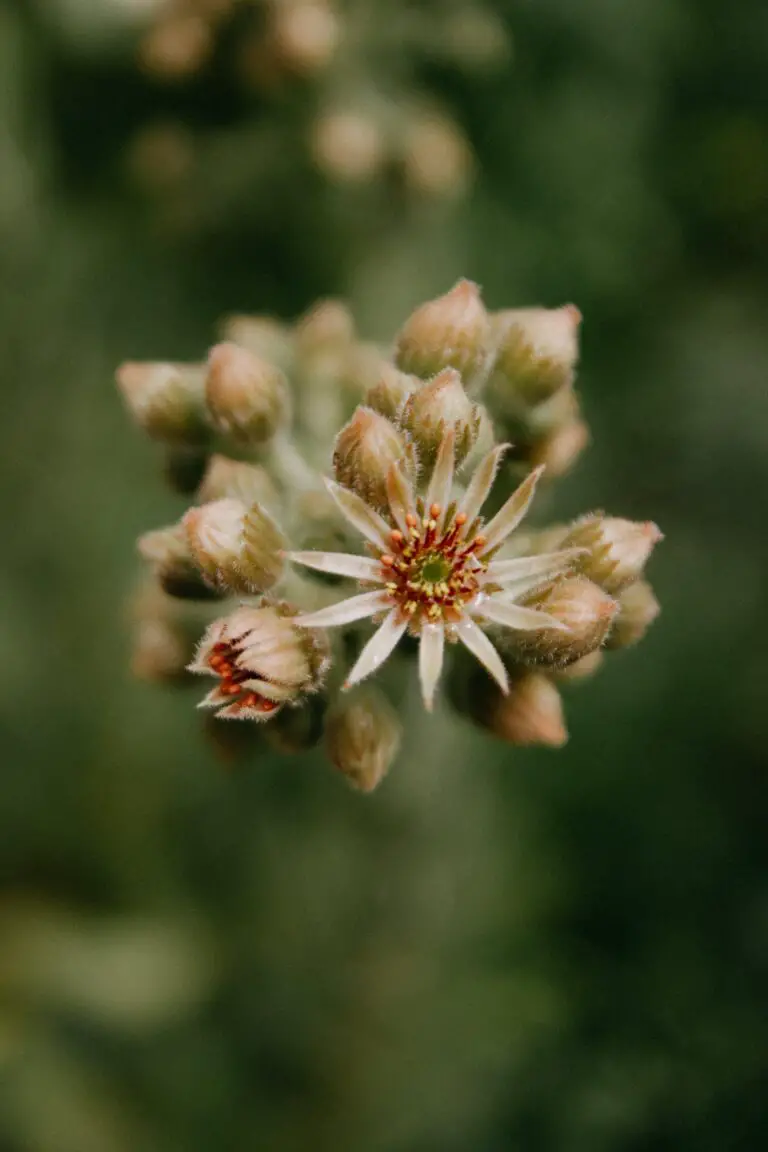
Picture this: a cluster of sempervivum plants, each one poised to reveal its floral bravado. When they do decide to flaunt their flowers, it’s a botanical standing ovation. Yet, amidst the anticipation and excitement lies a beautiful reminder of nature’s cycles—birth, bloom, and the eventual rebirth through their progeny.
Gardeners, be vigilant but not overly eager. These are plants that bloom on their own terms. Keep an eye on the weather, tend to them with a light touch, and when the sempervivum flowers emerge, step back and admire the spectacle of nature’s own timepiece in full glory.
The Astonishing Variety of Sempervivum Flowers
When you imagine a sempervivum, also famously known as the “houseleek,” you probably picture a cluster of plump leaves arranged in a rosette. But there’s so much more to these hardy succulents than meets the eye. Let’s embark on a botanical adventure to uncover the myriad of colors and forms that sempervivum flowers bestow upon us.
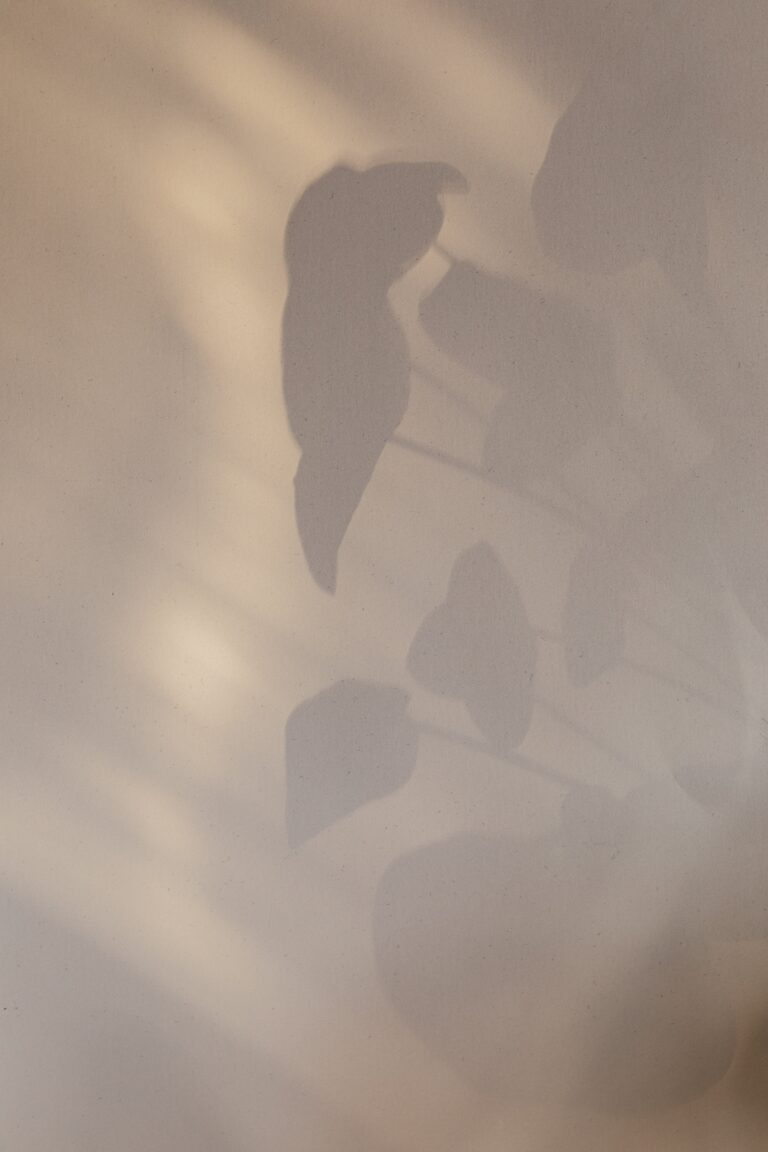
Have you ever seen a sempervivum in full bloom? It’s a rare yet remarkable sight. Unlike their more subdued foliage, sempervivum flowers can dazzle with an unexpected vibrancy. Each species and cultivar flaunts a distinct hue – from a blushing pink to a radiant yellow, a deep red to even a serene white. The impression they leave is nothing short of striking. Picture this: the ‘Red Rubin’ sempervivum, for instance, with its star-shaped, ruby-red flowers, can transform any space into a vivacious garden delight.
The shapes of these flowers are just as intriguing. Some semblances as simple and open, inviting pollinators with their accessible design. Others boast a more complex structure, with multiple layers of petals that play a flirtatious game of hide and seek with their core. Imagine stumbling upon the ‘Pacific Blue Ice,’ with blooms like intricate lavender stars twinkling amidst the leaves.
Sempervivum flowers don’t just sit pretty – they act as beacons for the busy bees and fluttering butterflies, turning your garden into a hub of biodiversity. Who knew that hosting a little wild party for pollinators could be as easy as letting your ‘houseleeks’ flaunt their floral finery?
It’s fascinating to observe how these plants, usually celebrated for their resilience and minimalistic charm, throw a curveball with their spectacular flowers. Each flower is a testament to the sempervivum’s adaptability and serves as a reminder of nature’s boundless creativity. So next time you spot a sempervivum patiently perched in a rockery or on a rooftop, remember—it’s a dynamic organism, silently crafting its next floral masterpiece.
Caring for Sempervivum Before and After Blooms
Nestled within the rosettes of sempervivum, lies a blooming surprise that rewards patient gardeners with a stellar floral display. As rosette enthusiasts, we know that proper care is the linchpin to unlocking their full potential. So let’s dig into the garden of knowledge and unearth some practical advice on how to cherish your sempervivum plants through their entire lifecycle, highlighting the crucial stages of pre-bloom and post-bloom care.
Imagine, if you will, a sempervivum plant on the cusp of blooming. It is a pivotal moment, where the enthusiasm of an impending flower meets the anxious care of the gardener. Pre-bloom care starts with the basics—well-draining soil and careful watering. Think of water as a sporadic guest rather than a permanent resident at the roots of your plant. These succulents revel in the ‘soak and dry’ approach, thirsting for a deep watering only when the soil has completely dried out.
Feeding for a Future Flourish
As your succulent prepares to bloom, consider a light feeding with a balanced fertilizer to bolster its strength. Remember, the goal is not to create a banquet, but to provide just enough nutrients to support those imminent blossoms. Once the flowers have had their moment in the sun and start to fade, resist the urge to mourn their departure. The post-bloom phase is not an end, but a transition, where your sempervivum may produce offsets—pup-like progenies that ensure the legacy of the rosette continues.
Post-Bloom Care: A New Beginning
After your sempervivum flowers, it’s time to focus on what comes next. The mother plant, having completed her performance, will gradually bow out, but not before passing the torch to her offsets. These little chicks will need room to grow, so gently clearing away the withering rosette can pave the path for their success. Keep a close eye on these young succulents, as they will carry on the lineage of your gardening efforts.
As you nurture these plants, keep in mind that every sempervivum journey is unique. For a visual feast of care tips, feast your eyes on this , which delves into the art of growing and maintaining healthy sempervivum plants. So go ahead, give your succulents the care they deserve and watch them thrive!
The Impact of Flowering on Sempervivum Plants
Imagine witnessing the transformation of a stony, steadfast sempervivum rosette bursting into beautiful star-shaped blooms. But did you know that this spectacular display is not just a visual feast? It’s a pivotal moment in the life cycle of sempervivum plants. Let’s take a closer look at what this blooming means for our beloved ‘live-forever’ rosettes.
While the sight of sempervivum flowers might fill gardeners with awe, it also heralds a bitter-sweet reality. Once a sempervivum flowers, it’s embarking on its grand finale. Post-flowering, the rosette that bore the bloom will typically die back, a process known as being monocarpic. But fret not, for this is not the end! The plant smartly ensures its legacy continues through offsets—new rosettes that rise to take the place of their predecessor.
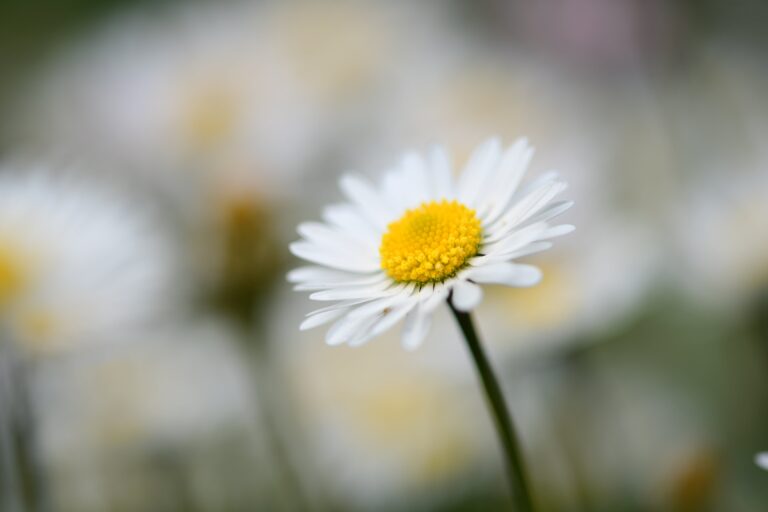
During the flowering process, sempervivum plants put on a real show. In some cases, they extend a flowering stalk that can reach several inches high, with multiple flowers forming a crown atop this natural pedestal. It’s a signal to bees and other pollinators that it’s time to indulge in the nectar banquet held in each flower’s heart. But for the plant, it’s the last hurrah—a final energy-intensive effort to produce seeds and propagate.
As garden enthusiasts, our role in managing the sempervivum’s monocarpic behavior becomes crucial. It’s a chance to not only admire nature’s cycle of life but also to cultivate it. When the mother plant flowers, her energy is devoted to that effort, effectively halting the production of offsets. By propagating these offsets before the blooming, we can encourage a new generation of rosettes to proliferate, ensuring the charm of sempervivum gardens endures.
Do remember though, the fading of the flowering rosette doesn’t have to signal a void in your garden. The gap provides a canvas for creativity—perhaps a new arrangement of offsets or an entirely different succulent species to complement the existing ensemble. In this way, sempervivum plants not only grace us with their striking blossoms but also invite us to engage actively with our gardens, blending nature’s spontaneity with our own artistic touches.
Nurturing New Life After the Sempervivum Blooms
Given that a flowering sempervivum will eventually conclude its cycle, it’s vital to keep an eye on the youthful offsets that surround it. These offsets, or ‘chicks’, are the future. Providing them with the optimal care—proper soil, adequate watering, and enough sunlight—will facilitate their growth into robust rosettes. Over time, they will develop their own root systems, independent of the mother plant, ready to take on the sempervivum mantle. It’s a testament to the incredible resilience and self-sustaining prowess of these plants that is both inspiring and humbling for any gardening aficionado.
Watching a sempervivum flower can invoke a spectrum of emotions, from exhilaration to a touch of melancholy. It’s a reminder that nature is a tapestry of continual beginnings and ends. Yet, through attentive gardening practices, we get to weave new patterns into that tapestry, ensuring sempervivum’s flower power is more than just a fleeting glory—it’s a legacy in the making.
Incorporating Sempervivum Flowers into Garden Design
If you’ve been enchanted by the sculptural beauty of sempervivum rosettes, wait until you see their flowers in action — a true exhibition of nature’s artistry! When these succulent stars take center stage, their blossoms are nothing short of a revelation, transforming rock-lined alcoves and containers into blooming spectacles. Let’s dig into the essence of garden design with ‘hens and chicks’ as they unveil their magnificent blooms.

Imagine a rock garden, rugged and weather-worn, now picture it painted with the delicate inflorescence of sempervivum flowers. Their strappy petals shooting upward in a starburst of colors can be a showstopper amid the steadiness of stones. Strategically place these living sculptures where they can catch the morning light or where their sunset hues will glow against the dimming day.
Don’t think sempervivums are just for craggy corners! Containers also offer a canvas for these beauties. Plant them in clusters, and let their bloom spikes rise like floral periscopes, adding height and diversity to your potted arrangements. Choose a container palette that complements or strikingly contrasts with their petals for an all-eyes-on-them scenario.
Companion Planting with Sempervivum Flowers
Companion planting isn’t just about boosting garden health; it’s about visual chemistry. Pair sempervivums with cascading plants like ‘string of pearls’ or ‘silver falls’ dichondra for a textural play. The soft drape of these companions will accentuate the upright flower spikes of your sempervivums, creating an engaging tapestry of form and flow.
Groundcover, too, plays well with these blooming marvels. Consider a bed where low-growing thyme or creeping phlox is the carpet, inviting sempervivum’s vibrant flower stalks to stand tall – a polychromatic spike in a sea of green. Selecting companion plants with blooms that complement the sempervivum can unify your garden’s color story and celebrate seasonal shifts in hue.
As you weave sempervivum flowers into the fabric of your garden, remember that these aren’t fleeting moments of beauty. These perennial wonders return year after year, each bloom a reminder of nature’s resilience and the continuous wonderment your garden holds. Their easy-going nature and drought tolerance are pluses that make sempervivums both a practical and enchanting choice for gardeners in pursuit of enduring splendor.
Capturing Sempervivum Flowers Through Photography
As you gaze upon the geometric marvel that is the sempervivum bloom, it’s hard not to be drawn in by its intricate beauty. This extraordinary floral display is a dream subject for any shutterbug, but its unique characteristics require a tactful approach to photography. Whether you’re a budding amateur or a seasoned pro behind the lens, the sempervivum flower presents an alluring challenge ripe for capturing.
Mastering the Light: A Photographic Symphony
First things first: lighting. It’s the make-or-break factor in all things photography, and sempervivum flowers are no exception. The succulent’s rosette form can cast shadows that obscure the delicate details of its petals. To give each shot life and depth, aim for the golden hours at dawn or dusk when the soft light caresses every leaf and petal. Visualize the light as a gentle conductor, orchestrating an interplay of shadows and highlights that reveal the rosy hues and textures of your fleshy subject.
Composition: Crafting the Perfect Frame
Next up is composition. Think of it as a conversation between the flower and its surroundings. Each photograph tells a story. Do you isolate the sempervivum in a solo soiree or juxtapose it against a backdrop of rugged rocks or lush greens? Consider the rule of thirds, placing your bloom off-center for a dynamic effect, or go bold with a macro shot that splashes the frame with the flower’s intricate details. With each angle, you’re not just taking a photo; you’re curating an experience.
And while the rosette’s symmetrical splendor is a sight to behold, capturing the energy that radiates from within the sempervivum flower can transform a static image into a living narrative. This isn’t just a plant; it’s an emblem of resilience and beauty that echoes the cyclical dance of life. Look for the interplay between the emergent stalk and its siblings still snug in a spiral embrace, each waiting their turn to reach for the sky.
Every click of the shutter is an opportunity to convey the unique story of the sempervivum flower, from its hardy origins on craggy precipices to the serene sanctuary of your garden. As you refine your approach, remember that photography is more than just technical prowess; it is an art fueled by passion and the desire to freeze a moment of natural wonder in time.
Frequently Asked Questions
Have you ever admired the vibrant, star-shaped blossoms of sempervivums and wondered about their secret life? Let’s embark on a journey to uncover the mysteries behind these captivating succulents!
How Do I Care for Sempervivum Flowers?
First things first, caring for these hearty beauties is simpler than you might think. Imagine a plant that thrives on neglect—sempervivums are the “set it and forget it” of the floral kingdom. Ensure they get plenty of sunshine, like the natural light these blooms soak up in their rocky, alpine homes. Water them sparingly; these plants are drought warriors, designed to survive the driest climates, so overwatering is a bigger foe than drought.
When Will My Sempervivums Flower?
Now, for the magic show! Typically, these hardy rosettes throw a flowering fiesta once they’re mature, which could take several years. But the wait is worth it—imagine a rosette, the Helen Mirren of the plant world, showing off its grandeur only when the time is just right. When the blooms do arrive, usually in the warmth of summer, they shoot up like fireworks on long, majestic stalks, inviting bees to their pollen-packed party.
Can I Grow New Plants from Sempervivum Seeds or Offsets?
Absolutely! Casting out offsets akin to a generous oak tree dropping its acorns, sempervivums make propagation a breeze. These offsets, affectionately called “chicks,” can be gently plucked and replanted to form their very own rosette ensemble. If you’re patient enough for a longer encore, you can play the waiting game with seeds that emerge post-bloom—nature’s tiny treasures ensuring the spectacle goes on.
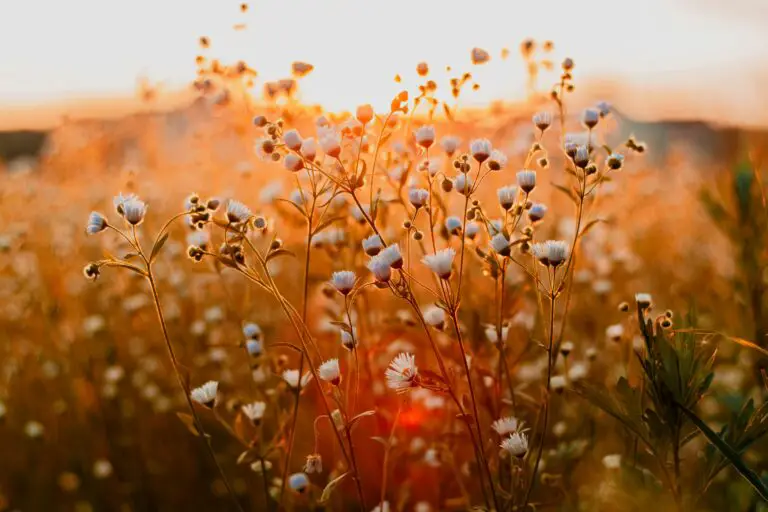
As you learn more about sempervivum flowers, it’s like befriending a quiet neighbor who turns out to be a rockstar gardener, full of surprises and blooming with talent. So go ahead, invite these low-maintenance superstars into your life and watch the wonder unfold!



